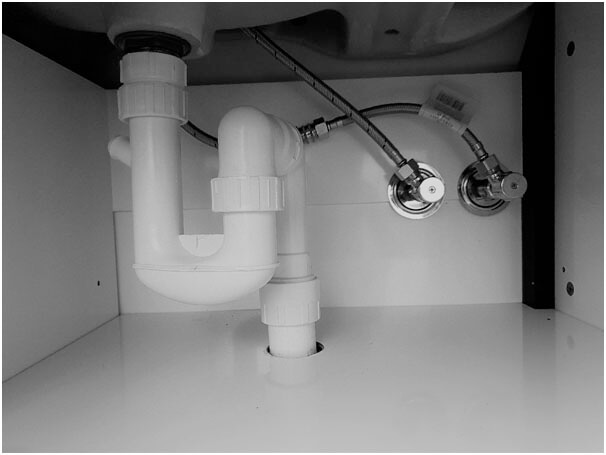The Benefits of Proper Ventilation in Your Plumbing System
The Benefits of Proper Ventilation in Your Plumbing System
Blog Article
Every person has their personal theory when it comes to What Is A Plumbing Vent & How Do They Work?.

Proper ventilation in pipes systems is commonly overlooked, yet it is important for keeping the performance and safety and security of your home's plumbing. Ventilation assists manage air pressure, protect against the buildup of hazardous gases, and guarantee the effective removal of waste. In this overview, we will certainly check out the value of proper plumbing ventilation, how it functions, and the benefits it brings to your pipes system.
Understanding Ventilation in Pipes
Air flow in pipes describes the network of pipelines that enable air to move via the water drainage system. These vents offer numerous objectives, consisting of managing air pressure within the pipes, protecting against sewage system gases from getting in the home, and aiding in the smooth flow of wastewater.
Just How Ventilation Functions in Pipes Equipments
Air Pressure Regulation
Correct air flow preserves balanced air pressure within the pipes system. When water flows through pipelines, it displaces air. Without appropriate ventilation, this variation can develop adverse stress, causing slow drains or siphoning of water from catches, which can trigger undesirable odors to permeate into the home.
Avoiding Sewage System Gas Build-up
Among one of the most important functions of plumbing vents is to prevent drain gases, such as methane and hydrogen sulfide, from accumulating within the home. These gases can present serious health threats and are highly flammable. Vent pipes enable these gases to leave securely outside.
Aiding in Waste Removal
Ventilation assists in the reliable removal of wastewater by preventing airlocks in the drainage system. When air can stream openly through the vents, it enables water and waste to stream smoothly through the pipelines, decreasing the risk of blockages and backups.
Types of Pipes Vents
Main Heap Vent
The primary stack vent, also known as the air vent pile, is the primary air vent in a plumbing system. It extends from the major drainpipe line up via the roof covering, allowing gases to leave and fresh air to go into the system.
Branch Vent
Branch vents link to the main stack vent and offer individual components, such as sinks, bathrooms, and showers. These vents ensure that each component has appropriate air flow to operate effectively.
Air Admittance Shutoff (AAV).
An Air Admittance Valve (AAV) is a one-way shutoff that permits air to go into the pipes system without the need for a typical vent pipeline prolonging through the roofing. AAVs are commonly utilized in renovations or locations where mounting a conventional vent is unwise.
Indications of Poor Ventilation in Pipes.
Slow Draining Fixtures.
If your sinks, tubs, or bathrooms are draining slowly, it could be an indication of poor air flow. Poor air flow can create a vacuum cleaner impact, making it challenging for water to drain appropriately.
Gurgling Appears.
Gurgling audios coming from drains pipes are commonly an outcome of air being sucked via water catches because of unfavorable pressure in the pipes. This is a clear indicator of not enough ventilation.
Undesirable Smells.
Drain odors inside your home are a warning that your pipes system is not effectively ventilated. This might imply that sewage system gases are not being appropriately vented outside, bring about possibly harmful problems.
Common Air Flow Errors.
Insufficient Vent Sizing.
Using small air vent pipes can bring about poor air circulation and stress imbalances in the system. It's essential to make use of vents that meet the details needs of your pipes system.
Improper Vent Placement.
Putting vents also much from the components they offer can lower their performance. Appropriate placement guarantees that air can flow openly and successfully through the system.
Ignoring Code Requirements.
Building codes supply specific guidelines for pipes air flow. Disregarding these codes can lead to a system that stops working to work correctly and may cause costly repair services or health hazards.
Advantages of Appropriate Air Flow.
Enhanced System Effectiveness.
Effectively ventilated pipes systems run a lot more successfully, with less obstructions, faster draining pipes, and much less strain on the pipes. This effectiveness expands the life-span of the pipes system.
Improved Air High Quality.
By protecting against sewage system gases from entering your home, correct air flow contributes to better interior air high quality, making your living atmosphere healthier and much more comfy.
Protecting Against Water Damages.
Sufficient ventilation aids avoid water from being siphoned out of catches, which can bring about sewer gases entering the home and triggering water damage gradually.
Actions to Ensure Proper Air Flow.
Consulting Plumbing Codes.
Constantly seek advice from local plumbing codes when creating or changing your pipes system. These codes offer the needed standards for appropriate airing vent and guarantee your system fulfills safety requirements.
Normal Inspection and Maintenance.
Routine inspections can help determine prospective air flow concerns before they become significant troubles. Maintenance tasks, such as cleaning up vent pipes and looking for clogs, are necessary for maintaining the system in good working order.
Professional Setup.
For new installments or major alterations, it's smart to hire a professional plumbing. They have the expertise to make sure the air flow system is correctly made and installed according to code.
Final thought.
Correct ventilation is an essential element of any plumbing system, guaranteeing that it operates efficiently and securely. By comprehending the significance of ventilation, recognizing the indications of inadequate air flow, and taking steps to maintain your system, you can stop pricey issues and safeguard your home's air high quality.
4 Things You Should Know About Your Plumbing Vents
What Plumbing Vents Are
Also called a vent stack, a plumbing vent is a vertical pipe attached to your drain line that runs through your roof. The plumbing vent pipe, or plumbing air vent, removes gas and odors from your plumbing system and allows fresh air to enter the pipes, helping the water to flow out of the drain pipes.
What Plumbing Vents Do
Plumbing vents have two basic functions. One of which is to allow unpleasant smelling wastewater and sewer gasses to escape your plumbing system instead of entering your home. Plumbing vent pipes are typically located on roofs, away from windows, to ensure the fumes exit the home completely.
The other function of the plumbing vent is to move fresh air into your plumbing system. This helps move water through every plumbing fixture in your house, like toilets and sink drains. Think of the way in which you need to let a little air into the bottle as you pour soda in order to make the drink flow smoothly.
Different Types of Plumbing Vents
True vent: This is the most common vent option. In simplest terms, a true vent is a vertical pipe attached to your drain line that exits through the roof. They often function as the main vent that other fixtures can connect to. Re-vent pipe or auxiliary vent: Attached to the drain line near specific plumbing fixtures, re-vent pipes run up and over to connect to the main vent. Common vent: Two plumbing fixtures installed on opposite sides of a wall are typically tied into the vent stack using something known as a sanitary cross. Wet vent: This venting option operates as a drain pipe and a vent at the same time. Wet vent drainage systems drain water from one fixture while venting the air from another. Although they’ve been used for over 100 years, wet vent systems have only recently been added to the plumbing code in many areas. If you’re planning on installing one in a bathroom remodel, make sure you check your local code prior to construction. Loop vent: For free-standing fixtures like kitchen island sinks, loop vents are ideal. These vent pipes run under the floor, rise from the P-trap, and create a loop inside the cabinet sink. Air admittance valve: An AAV is a one-way mechanical valve typically installed at the site of the plumbing fixture. AAVs allow venting to occur without having to tie into a larger venting system. They’re ideal for venting fixtures where you aren’t able to easily connect to an existing vent system. Common Plumbing Vent Issues
Although vent pipes typically don’t have water flowing through them, they’re still subject to many typical plumbing issues. For example, clogs are one of the most common problems associated with sewer vent pipes. If your vent pipe gets clogged, all of your plumbing fixtures tied into the vent stack will be affected.
A sink with a slow drain that bubbles and gurgles or a strong sewage smell around your toilet are both indicators that your toilet vent pipe is clogged. Because most vent pipes exit through the roof, old leaves, twigs or even a bird’s nest could be clogging the pipe.
Clogs in your vent pipe system cause a buildup of negative pressure, meaning that water won’t be able to flow out of your home very well. It’s similar to putting your finger over the opening of a straw to trap water inside. When you remove your finger, the water is able to flow out of the straw.
If you suspect you have any blockage in your vent, make sure you have a professional come examine the situation. Left unchecked, a blocked air vent can lead to other costly repairs, like leaks and sediment buildup.
Under Pressure
Pipe vents are essential aspects of a home’s plumbing system. Owning a home means learning about all sorts of things you never put much thought into before. But by understanding as much as you can about the important systems of your home, you can keep those budgets intact and those anxiety levels low.
https://www.homeserve.com/en-us/blog/home-improvement/plumbing-vents/

Do you enjoy more info about What Is A Plumbing Vent & How Do They Work?? Write a remark down the page. We will be glad to see your insights about this review. Hoping that you come back again soon. Please take the opportunity to share this article if you appreciated it. Thanks for your time invested reading it.
Visit Website Report this page